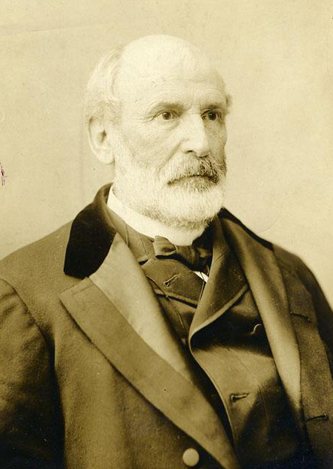8 Oct. 1826–8 Oct. 1904
![Photograph of Matt[hew] Whitaker Ransom, circa 1870-1880. Image from the Library of Congress.](/sites/default/files/images_bio/Ransom_Matthew_Whitaker_LoC_03967v.jpg)
Matt[hew] Whitaker Ransom, Confederate soldier, North Carolina attorney general, and U.S. senator, was born in Warren County to Robert and Priscilla West Coffield Whitaker Ransom. He attended Warrenton Academy and was graduated from The University of North Carolina in 1847. Having studied law during his senior year, he was at once admitted to the bar and commenced practice in Warrenton. A Whig in politics, he was a presidential elector on the Scott-Graham ticket in 1852. The same year the state legislature, although under the control of the Democrats, elected the popular Ransom attorney general of North Carolina. Three years later, when the Know-Nothing party absorbed the Whigs in the state, he resigned his position and identified with the Democrats.
In the meantime, Ransom had married Martha Anne Exum of Northampton County on 19 Jan. 1853 and moved to Verona, her fine plantation on the Roanoke River. The couple had eight children, including Matthew W., Jr., Joseph E., George E., Esther, Patrick Exum, and Robert. Ransom represented Northampton County in the lower house of the state legislature from 1858 to 1861, and in the latter year he served as one of three commissioners selected by the legislature to visit the Confederate convention at Montgomery, Ala. At this time he was a strong Union man, but Abraham Lincoln's call for troops made him a secessionist. He entered the Confederate army as a private but was soon commissioned a lieutenant colonel in the First North Carolina state troops and subsequently a colonel of the Thirty-fifth North Carolina Regiment. This unit was a part of his younger brother Robert's brigade, which he later commanded. On 13 June 1863 he was promoted to the rank of brigadier general. Ransom participated in the Battles of Seven Pines, Malvern Hill, Sharpsburg, Plymouth, and Drewry's Bluff and in the siege of Petersburg. Wounded three times during the war, he surrendered his command at Appomattox.

At the close of hostilities Ransom returned to farming and the practice of law in North Carolina. In 1872 he won a seat in the U.S. Senate to succeed Zebulon B. Vance, who had been elected but denied his seat because of political disabilities. He served continuously until 1895. In Washington Ransom acquired considerable influence even though he seldom delivered formal speeches on the floor of the Senate. He was a leader in securing a peaceful settlement to the disputed presidential election of 1876. A fusion of Populists and Republicans in North Carolina brought about his defeat in 1895, but President Grover Cleveland at once appointed him minister to Mexico, a post he held for two years. Afterwards Ransom retired permanently to private life. He died on his seventy-eighth birthday and was buried on his estate, Verona.